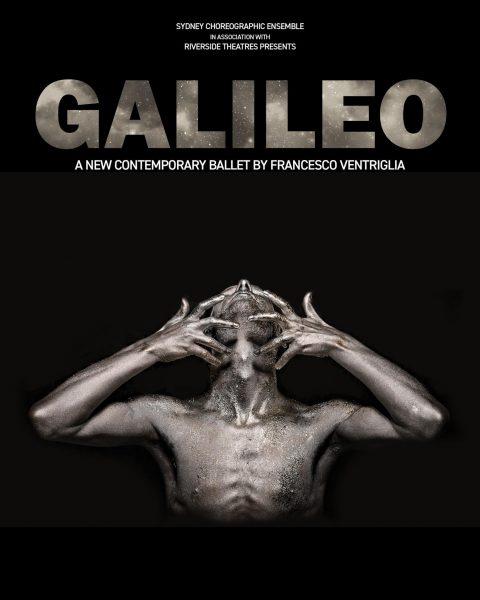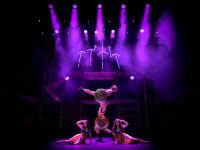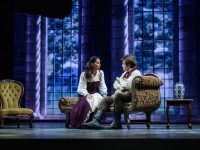Pushing The Boundaries of Gravity
Sydney Choreographic Ensemble’s ‘Galileo’
Reviewed by Sarah Navin
Just when you think you’ve seen all the movements four human limbs can create, in comes Sydney Choreographic Ensemble’s ‘Galileo‘. Pushing the boundaries of gravity, it’s a sleek, visual delicacy that will have you straighten up in your seat from the moment the 11 dynamic dancers burst onto the stage at Riverside Theatres Parramatta.
Four performances seem hardly enough for this contemprary ballet to be celebrated. This work deserves the highest accolades for Artistic Director Francesco Ventriglia‘s choreographic brilliance, and the sheer strength, skill and commitment to detail every young dancer exudes – Siobhan Lynch, Isaac Clark, Bridget McAllister, Veronika Maritati, Hugo Poulet, Zachary Healy, Ginger Hobbs, Connor McMahon, Ashlee Wilson, Caitlin Halmarick, and Sienna Bingham.
Galileo follows Sydney Choreographic Centre’s premiere of GRIMM in 2021, and explores the 16th century scientist’s discoveries about motion, playing with speed, freefall, trajectory, and inertia. One dancer is suspended in the air, walking in slow motion through space – as she is lifted up by two other dancers pushing against her hips. Dancers emerge from the wings, rolling onto stage on their backs with the support of a small platform with wheels – like a skateboard. Their arms float softly and it appears as though they’re hovering inches above the floor. They’re then spun wildly around the stage with the twist of an ankle by male partners, like we’re watching horizontal dancing and waiting for limbs to collide.
Ventriglia, who is an Italian former ballet dancer with Milan’s Teatro alla Scala, then cleverly uses the physical boundaries and possibilities of physics to explore the push and pull of attraction, love, separation and heartbreak. In a tense, romantic pas de deux, a male extends his hand but instead of being met by his lover’s hand as the audience anticipates, her head dramatically falls to his palm and she is whipped around in movements that are wonderfully unpredictable.
The choreography is refreshingly experimental – although it doesn’t have any of the clumsiness of something experimental, it’s very strong. Transitions are seamless. There is no visible preparation or anticiptation into the any number of challenging lifts. It’s beautifully fluid.
The cohesiveness of the ensemble is even more remarkale after learning the first time the group in its entirety rehearsed together, was four days before curtain up. While the creative process itself was three and a half months, the choreography was taught in under five weeks.
The women are dressed in flowing white blouses and jeans or ‘jeggings’, while the men are shirtless. It’s set to a vibrant selection of music from Vivaldi, Scarlatti, Corelli and Monteverdi, with audio design by Marco Giani. The movements are driven by powerful operatic sounds, followed by a playful country jig, charismatic clarinets and vigorous violins. Heads twitch side to side as dancers gather in a clump, jerking like vocal chords dancing in vibrato.
The dancer’s faces are wonderfully calm while they perform what’s clearly an exhasuting feat – the demands of the 19 part work only visible through the sweat eventually flying off them in the final scenes. They make it look effortless and not one iota of energy is lost, down to the last spiralling fingertip. Percussion and breath work is incorporated into the vibrant finish of the work, which successfully keeps you engrossed throughout. The creative team is to be congratulated for the level of imagination and creativity in this work, while I have no doubt each of the dancers has a bright professional future. Highly recommend catching this production before it closes. You won’t regret it.














